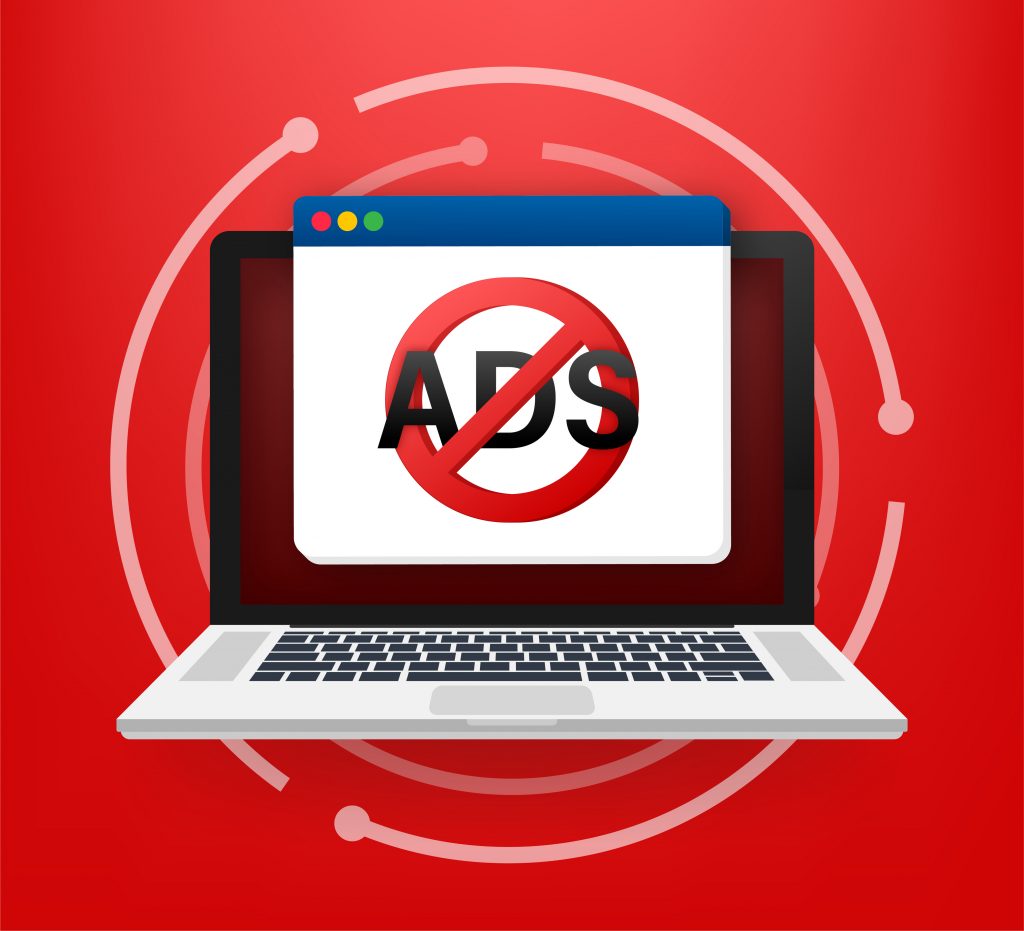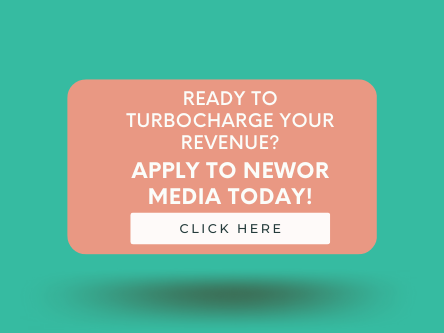
There’s some debate about how many people actively use adblockers to prevent online ads from being shown. You’ll find statistics saying anywhere from 20% to 40% of online users have installed ad blockers.
For example, a study of more than 10 billion pageviews on nearly 10,000 websites by adblock recovery company Blockthrough revealed that the average adblock rate is 21%. However, this number does not include VPN or DNS-based adblockers or network-level adblockers.
Web browsers like Opera, with 262 million users globally, also block ads by default.
What’s not up for debate is the staggering amount of revenue lost by publishers from the use of adblockers.
When ads aren’t shown, advertisers don’t pay but it makes it difficult to reach campaign goals. Even with today’s sophisticated ad tech, there can be a lot of time and effort to create and manage campaigns that never get seen. Adblockers also affect programmatic advertising for ad buyers. As more advertisers compete for fewer placements due to blocked ads, ad pricing as well — especially when campaigns or flights are restricted to defined periods.
That’s not to say that ad banners, display ads, and other ad formats aren’t effective and generating revenue for publishers, they are. And there are ways to recover some of the money being lost from adblockers. In this article, we’ll look at how adblockers work, the impact on publishers, and strategies to recover lost revenue.
How Do Ad Blockers Work?
An ad blocker is an app or browser extension that’s designed to stop ads from loading. When a user visits a website, an ad call goes out. The ad block solution checks the domain names of the elements against its blocklist and prevents the ad from load and substituting blank spaces.
For ad block users, pages can sometimes load faster and appear with less clutter. This can allow webpage visitors to focus more on the reason they visited. However, changing the ad experience can also alter the format of a page making it look less professional.
Why Do People Use Ad Blockers?
Ad blockers first came to prominence in response to user complaints about intrusive ads, such as popups that detracted from the user experience. With a growing concern about online privacy, ad blockers have become popular to prevent online tracking.
Online tracking is getting intense scrutiny from government bodies around the world. Legislation such as the EU’s General Data Protection Regulation (GDPR) and the California Consumer Privacy Act (CCPA) have implications for how data is collected, stored, and processed — including metrics gathered from advertising. While there is no national privacy law in the US currently, dozens of states have introduced their own privacy legislation.
Browsers like Safari and Firefox already block third-party cookies for internet users by default. Google Chrome, the world’s most popular browser, has announced its intention to stop support for third-party cookies. Although, it has now pushed the deadline for cookie deprecation back to sometime in 2024.
People also use adblockers due to security concerns to prevent hackers from using ad formats to launch malicious code. With ads blocked, it gives cybercriminals one less vector for attacks.
The most used and downloaded adblocker is called AdBlock Plus, which has been downloaded more than 500 million times by adblock users.
How are Publishers Being Affected by Ad Blockers?
Adblock software or any app or plugin that’s designed to prevent ads from showing will lead to revenue loss for publishers. When ads aren’t seen, they aren’t counted as impressions so they won’t generate revenue for cost per thousand (CPM) impression campaigns. Site visitors can’t click through an ad that doesn’t display, so publishers also lose out on any cost-per-click (CPC) advertising.
Ad blocking can also block other website features at times, including publisher’s own ads or promotions, or sign-up forms and paywalls. This can inhibit lead generation, paid subscriptions, and other revenue opportunities.
Adblock analytics can help publishers see how much activity is taking place to assess the potential impact on revenue. With this knowledge, publishers can look for specific strategies to recover lost revenue.
Strategies To Recover Lost Revenue
There are several effective ways publishers can recover lost revenue due to adblockers.
Optimize Your Ads
The majority of people visiting your website, mobile site, or app are not using adblockers so you will want to ensure that those visitors are seeing ads that are optimized. By optimizing your existing ads and ad placement, you can maximize your revenue opportunities.
One of the biggest reasons people block ads is because they see them as intrusive or irrelevant. When you use the right ad units and server better ads that are relevant to users, you give them less reason to block them.
Ad placement is also important. If ads obscure content or disrupt the user experience, visitors may turn to an adblock solution. There’s always been a delicate balance between the number and placement of ads on a page and the user experience but it’s more important now than ever.
While many ad networks such as Google AdSense are self-service, other ad networks like Newor Media will combine AI tools and experience to analyze your site and ensure your ad placements are optimized for revenue growth.
Publish Branded Content
Branded or sponsored content is immune from ad blockers. This type of content blends seamlessly into your website with a similar look and feel as editorial content. Since there are no scripts or codes used for delivery, adblockers won’t detect it.
Done well, branded or sponsored content also provides useful, relevant information that is seen as informational. While it does highlight advertisers, it isn’t an overt ad.
Native advertising content can also include links to revenue opportunities, such as affiliate marketing links or promotional posts.
Offer Paid Subscriptions
Another way to scrape back revenue that’s been lost is to offer premium content and paid subscriptions.
Paid subscriptions can set your website apart and increase user perceptions of quality. Regular visitors may feel as if they are missing out on important content and be open to the idea of signing up. Not only does this increase visitor loyalty, but these value exchanges create monthly recurring revenue (MRR), which helps generate more predictable cash flow.
Encourage Whitelisting
Publishers should employ a way to enable adblock detection on their sites. When adblockers are detected, it is an opportunity to explain how advertising supports the site they want to visit and ask them to add your site to their accepted list.
Whitelist options appear on the screen of the website users are on, and ask if they want to leave the ad blocker on or turn it off. If you are offering high-quality content that delivers valuable information, many site visitors will accept ads to see what you’re providing.
Besides asking users to allow ads on your site for ad recovery, you can also request that users:
- Turn off ad blocking for one-time use, allowing ads to be seen
- Block access to your site’s content
- Make a small donation to help fund quality site content
- Offer paid ad-free subscriptions
There are several options for adblock detection to encourage whitelisting. You’ll find industry-developed scripts from the Interactive Advertising Bureau, open source code on Github, and custom codes from ad networks such as Google AdSense.
Opt for Email Newsletters
Another option is to encourage site visitors to sign up for email newsletters. You control the content of email newsletters, which may provide additional monetizing options.
When people sign up for email newsletters, also capture personal information that can enhance your first-party data. At the same time, a newsletter can keep your brand in front of consumers even when they are not visiting your website.
It’s a great way to establish credibility and authority to create better brand awareness while providing additional opportunities to generate revenue, including ads, sponsorships, affiliate links, or direct selling.
Consider Server-Side Ad Insertions
Server-side ad insertion (SSAI) can also attempt to prevent video ads from getting blocked. The SSP will use various anti-adblock methods so that an adblocker doesn’t recognize an ad unit. For example, since the ad request happens at the server level rather than the browser level, this may bypass the adblocker as it never sees the ad call.
Also known as dynamic ad insertion or ad stitching, SSAI can display ads and video in a single stream. It’s a common technology for streaming video. When videos play, everything is seen as one stream similar to the way you would watch a program with ads on TV. Adblockers are generally unable to distinguish between streaming content and streaming ads in this case.
Even with an adblocker in place, many server-side ad insertion ads will show and aid in a publisher’s recovery solution.
SSAI is an alternative to client-side ad insertion (CSAI) which initiates an ad call to a server to deliver the ad and may be detected by adblockers in some cases.
Adhere to Acceptable Ads Standards
The Acceptable Ads Committee is an independent organization that defines specific criteria for advertisements to be deemed as “acceptable ads.” These are ads that are not considered intrusive or annoying, do not interfere with content, and meet other standards.
Adblockers, such as Adblock Plus, allow users to whitelist acceptable ads, so they will continue to be seen when an adblocker is deployed.
Acceptable ads have multiple standards to meet, including:
- Distinction: Ads should be recognizable and ads easy to distinguish from other content. Ads should be clearly marked as advertisements.
- Size: Ads size and ad placement are also evaluated. For example, when pages first load, they must not take up more than 15% of the visible portion of the web page cumulatively. There are also specific standards for size.
Conclusion
Adblockers stop advertisers from getting their message out and take a substantial amount of ad revenue away from digital publishers. However, there are strategies you can use for adblock revenue recovery.
By optimizing your current ad inventory, using adblocker detection, and some of the other strategies discussed above, you can still generate revenue despite adblockers.
Newor Media is standing by to assist publishers in multiple ways to enhance website earnings. Newor Media helps publishers find the optimal ad placement to maximize revenue when ads are shown. Contact Newor Media today to discuss potential revenue losses and to build a strategic plan for recouping lost funds.

